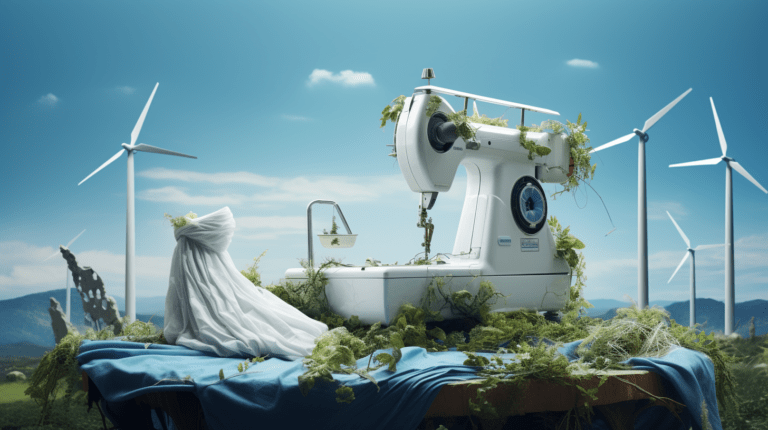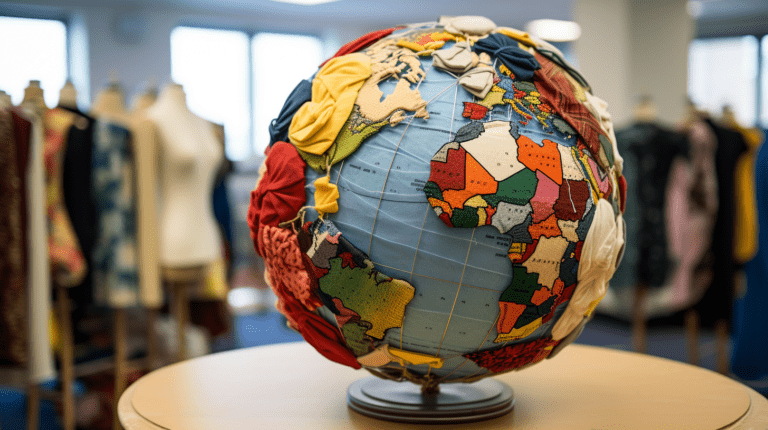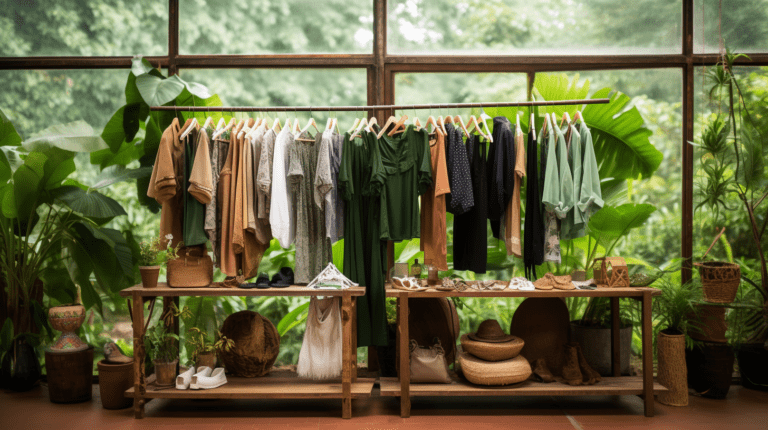Sustainable Fashion Trends – Just as vinyl records made an unlikely comeback, so too does sustainable fashion rise from the ashes of fast-fashion’s wasteful excess. You’re no stranger to the environmental crisis facing our planet, and it’s high time we brought this consciousness into our wardrobe.
Eco-friendly fabrics, ethical manufacturing practices, second-hand shopping and upcycling are more than just buzzwords- they’re vital components in a new era of responsible consumerism. The slow fashion movement is gaining traction; brands that prioritize quality over quantity are no longer relegated to niche corners of the market. Vegan and cruelty-free options abound for those who value all life on Earth.
You have power here- the power to make a difference with every purchase you make. Join us as we explore these sustainable fashion trends and provide practical tips for making your wardrobe greener without sacrificing style or substance.
Key Takeaways – Sustainable Fashion Trends
- Sustainable fashion is rising in popularity as a response to fast-fashion’s wastefulness.
- Eco-friendly fabrics, ethical manufacturing practices, second-hand shopping, and upcycling are important components of sustainable fashion.
- The slow fashion movement promotes quality over quantity and encourages conscious consumerism.
- Vegan and cruelty-free options are available for those who value animal rights and want to make eco-conscious choices.
Understanding Sustainable Fashion – Sustainable Fashion Trends
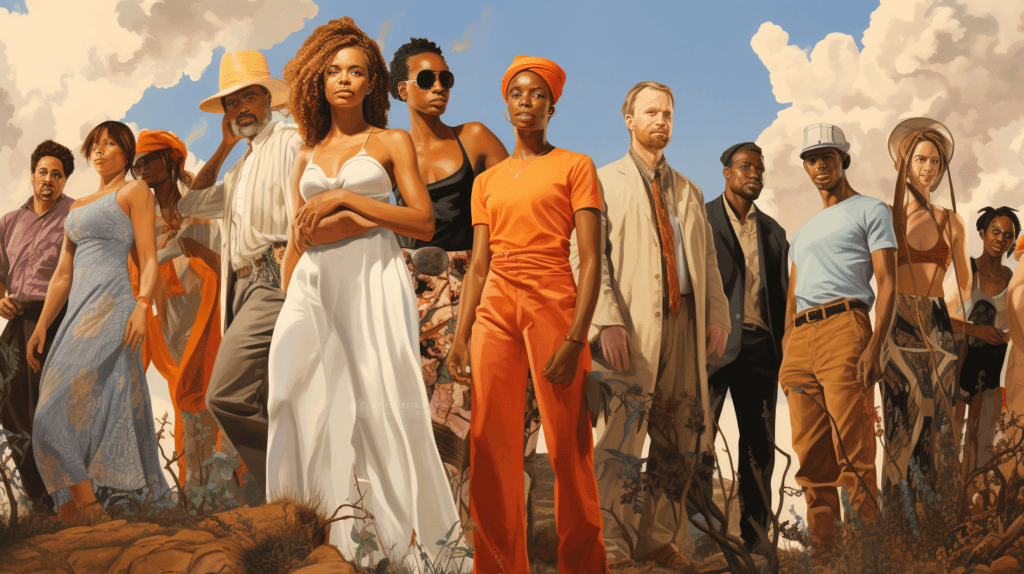
Imagine you’re walking down a fashion runway, but instead of the usual high-end couture, you’re donning clothes made from recycled materials, organic textiles, and natural dyes; welcome to the world of sustainable fashion. This trend is more than just an aesthetic statement; it’s a commitment to preserving our planet while still looking stylish.
Don’t fall into the greenwashing pitfalls that are all too common in today’s market. Brands may claim to be eco-friendly or ethically produced, but without proper research and consumer awareness, you might not realize when these claims are hollow. It’s crucial to educate yourself about what makes a brand truly sustainable: look for transparency about their supply chain, fair trade practices, and use of renewable resources.
Sustainable fashion isn’t just about how clothes are made either; it also considers what happens when they’re no longer wanted. Brands committed to sustainability often have initiatives in place for recycling or repurposing garments once they’ve served their purpose.
By embracing this movement, you’re not only making a powerful choice for your wardrobe but also sending a clear message: that style doesn’t need to come at the cost of our environment. As consumers become more aware and demand greater transparency from brands, we can drive change in this industry.
As we delve deeper into sustainable fashion trends, one exciting development stands out – the rise of eco-friendly fabrics. These innovative textiles offer all the luxury and comfort we desire from our clothing while significantly reducing environmental impact – A topic worth exploring further in our next section.
The Rise of Eco-Friendly Fabrics – Sustainable Fashion Trends
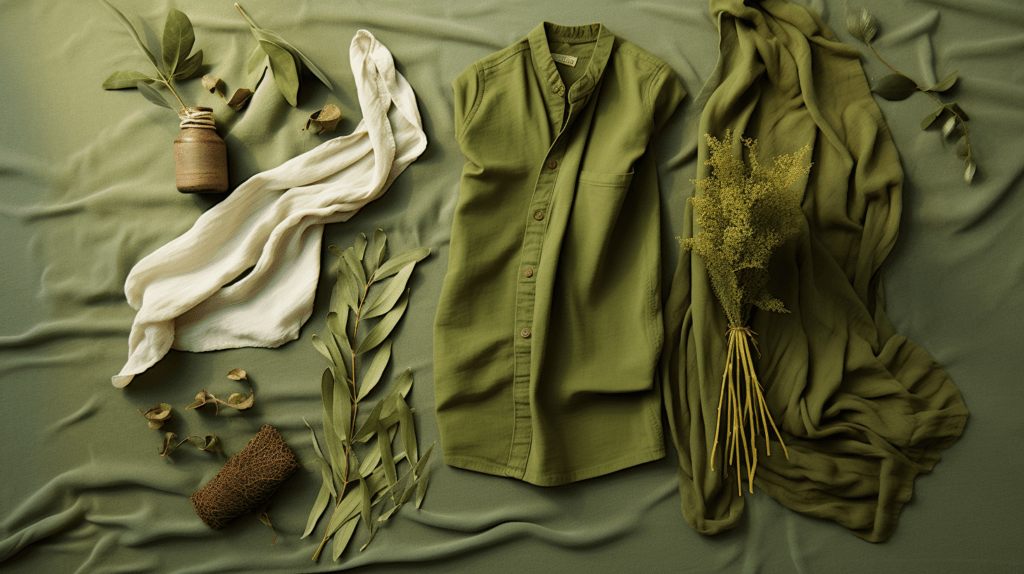
You’re witnessing a revolutionary shift in the fashion industry as eco-friendly fabrics are taking center stage like never before. This change is driven by a surge of innovative textiles and biodegradable materials, transforming the landscape of sustainable fashion.
These aren’t just any fabrics; they’re meticulously crafted from sustainable sources with an unwavering commitment to improving our planet’s health. From organic cotton grown without harmful pesticides to recycled polyester derived from plastic bottles, these materials are revolutionizing how we view and value our clothes. These innovative textiles are not only better for Mother Earth but also provide you the power to make significant changes through your clothing choices.
Biodegradable materials have become particularly popular due to their ability to break down naturally over time, leaving minimal impact on the environment post-use. Imagine owning a shirt that decomposes once discarded, returning nutrients back into the earth rather than lingering in a landfill for centuries. That’s power!
Brands committed to this cause are weaving sustainability into their core business models, giving you access to high-quality pieces that don’t compromise style or ethics. The trend is clear – consumers like you want more than just fashionable outfits; they crave responsibly made clothing that aligns with their values.
Each garment produced using these eco-friendly fabrics represents a small victory against fast-fashion practices and environmental degradation. It’s an affirmation of your capacity as a consumer to influence market trends and champion sustainability in every aspect of life.
As we delve deeper into conscious consumption, let’s explore another crucial aspect shaping this new-age fashion realm – ethical manufacturing practices – which empowers us further in making informed decisions about what we wear.
Ethical Manufacturing Practices – Sustainable Fashion Trends
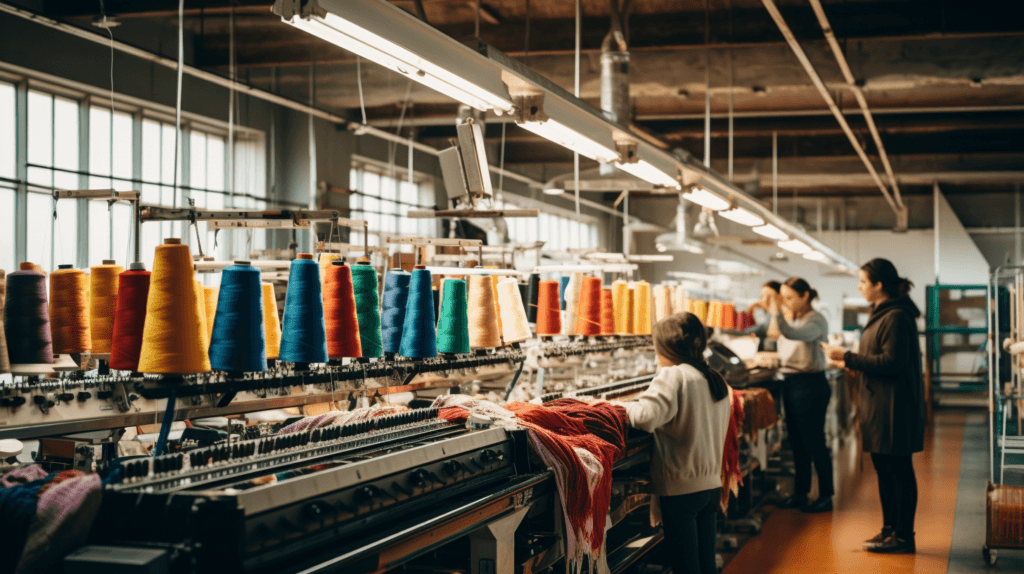
Imagine a world where your fashion choices not only make you look good, but also do good. That’s the power of fair trade fashion and supporting local artisans.
These ethical manufacturing practices ensure that those who make our clothes are treated fairly, paid well, and work in safe conditions, all while reducing the environmental impact of mass production.
Fair Trade Fashion
It’s in the realm of fair trade fashion that style and ethics truly intersect, creating a powerful movement towards sustainable living. This trend is about more than looking good; it’s about making a statement. You’re not just buying clothes, but contributing to an ethical supply chain that respects workers’ rights and environmental standards.
The impact of trade regulations on this sector can’t be underestimated, with policies shaping how brands operate globally. Consumer awareness campaigns have played a pivotal role in bringing fair trade fashion into the mainstream. They’ve empowered you, the customer, to make informed choices and demand greater transparency from retailers.
It’s time to embrace this trend wholeheartedly as we progress along our sustainable journey. Next up? Let’s delve deeper into the significance of supporting local artisans within this sphere.
Supporting Local Artisans
By backing local craftspeople, you’re bolstering a bustling community of creators committed to quality and creativity. This alliance not only aids artisan empowerment but also fuels community collaborations, paving the path for a more sustainable future.
Your support for locally made fashion pieces sends out an impactful statement – you’re voting with your dollars for ethical production methods and against mass-produced fast fashion.
Local artisans often practice traditional techniques handed down through generations, which typically are environmentally friendly. Their unique creations embody stories from their communities, adding authenticity and richness to your wardrobe that mass-produced items lack.
So, wield your influence wisely, patronize local talent and contribute significantly to sustainable fashion trends.
Next up on our sustainability journey: embracing the art of second-hand shopping and upcycling.
Second-Hand Shopping and Upcycling – Sustainable Fashion Trends
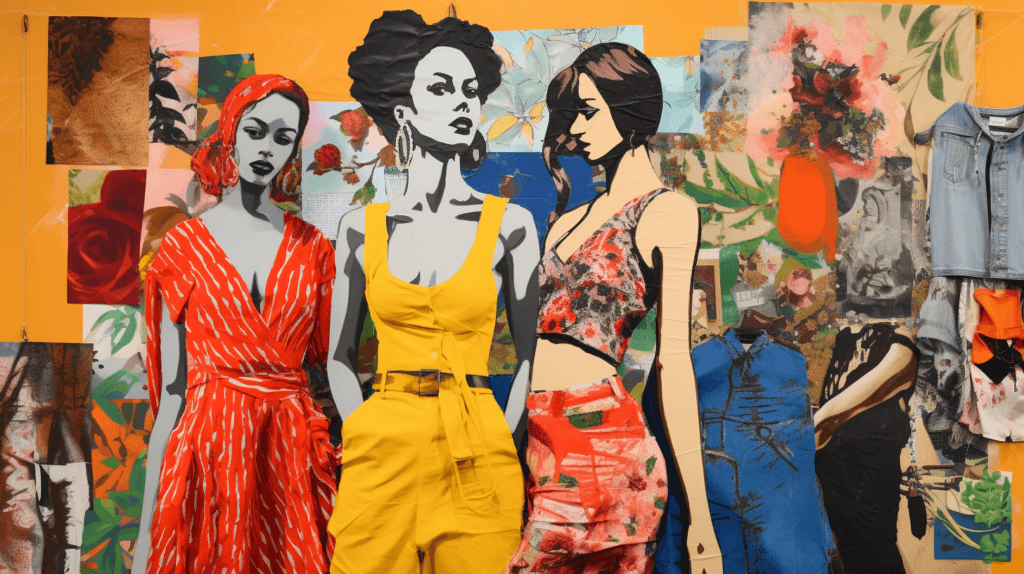
Who’d have thought that thrifting and upcycling could be the fashion-forward answer to our environmental concerns? Well, believe it or not, the sustainable fashion world is abuzz with these exciting trends. They’re not just about preserving the environment; they also provide unique opportunities for expressing your individual style and creativity.
The Vintage Revival trend: This isn’t merely about rocking retro looks. It’s a powerful statement against fast fashion’s wasteful cycle of production and disposal.
Where to start: Look for local thrift shops or online platforms specializing in vintage clothes. You’ll find treasures from yesteryears that are waiting to be part of your modern wardrobe.
Why it matters: Buying second-hand reduces demand for new items, thus decreasing energy consumption and waste generation.
Swapping Parties trend: Forget about mindlessly buying new stuff. Now you can swap clothes with friends or fellow fashion enthusiasts.
How it works: Organize a swapping party where everyone brings garments they no longer use. It’s like shopping without spending money!
The impact: These events promote conscious consumerism, encouraging people to value what they already own before seeking something new.
Your power lies in choosing sustainable options over fast-fashion fads, making a difference one outfit at a time. As you embrace second-hand shopping and upcycling, remember that every little bit counts towards combating climate change while leading by example in your community.
Moving forward doesn’t always mean going faster – sometimes it means slowing down to appreciate what we already have and rethinking how we consume fashion. It’s this spirit that underpins the slow fashion movement – an evolution we’ll delve into next.
Slow Fashion Movement – Sustainable Fashion Trends
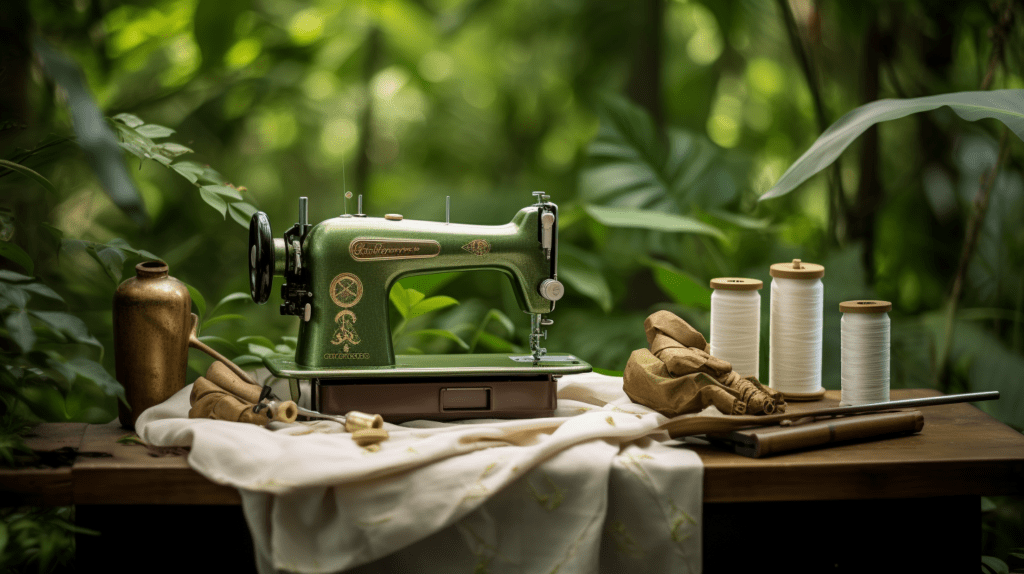
You’re not just a bystander, but a revolutionist in your own right when you embrace the slow fashion movement – it’s like taking a stand against the rampant consumerism that’s swallowing our planet whole. With this movement, you’re saying no to fast fashion and yes to ethical production methods. It’s time to rethink your wardrobe choices and align them with the principles of sustainability.
Let’s look at two significant aspects of slow fashion: Fashion minimalism and Capsule wardrobes.
| Aspect | Description |
|---|---|
| Fashion Minimalism | This approach promotes owning less yet versatile pieces that are timeless, well-made, and easy to mix-and-match. It challenges you to buy less but better quality clothes. |
| Capsule Wardrobes | A capsule wardrobe is a small collection of essential items that don’t go out of style. The focus is on fewer high-quality pieces that can be combined in multiple ways for different occasions. |
As an advocate for sustainable fashion trends, your power lies in making informed decisions about what you wear – choosing brands that align with your values of equity, fairness, and respect for all life forms. So instead of falling prey to constantly changing trends, demand transparency from brands about their supply chains and support those who prioritize people over profits.
This shift towards slow fashion isn’t merely about changing our shopping habits; it’s also about changing our mindset towards consumption itself – embracing quality over quantity, longevity over disposability.
Next up on our journey through sustainable fashion trends? Exploring vegan and cruelty-free options as another powerful way to make your style more compassionate and earth-friendly.
Vegan and Cruelty-Free Fashion – Sustainable Fashion Trends
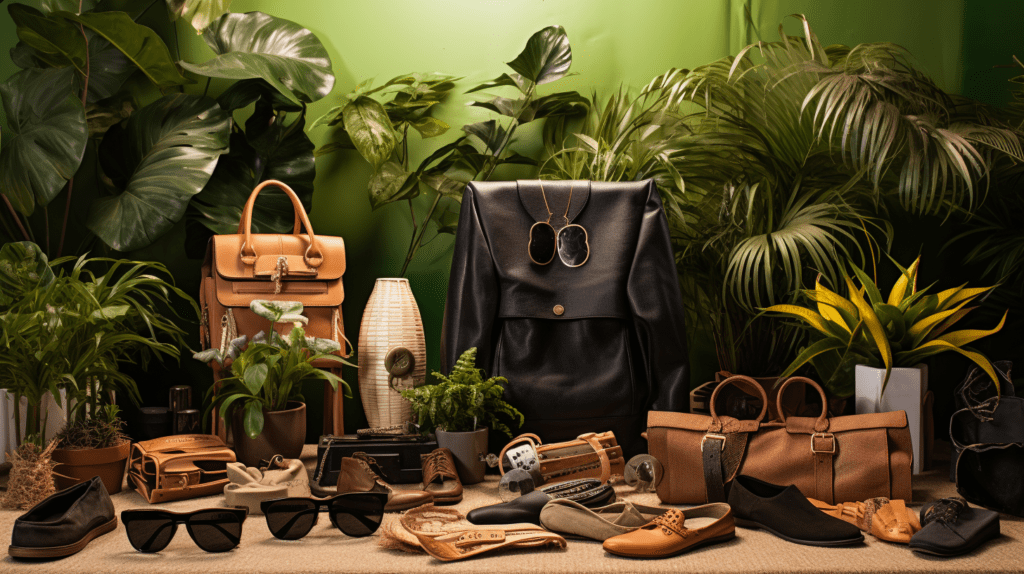
Isn’t it high time we talked about vegan and cruelty-free options that can make our wardrobes more compassionate and earth-friendly? This fashion trend is taking the industry by storm, not only for its ethical implications but also for its eco-conscious approach. It’s an undeniable power move to switch to a wardrobe that respects both animals and our planet.
Let’s delve deeper into this:
- Vegan Leather Alternatives:
- Cork: Harvested from the bark of cork oak trees, this material is biodegradable, renewable, and gives us durable products with a unique aesthetic.
- MuSkin: Made from mushroom caps, this alternative is organic, breathable yet waterproof – a perfect blend of style and functionality.
- Animal-free Silk Production:
- Ahimsa Peace Silk: Unlike traditional silk production methods which kill silkworms in the process, peace silk allows them to live out their full life cycle.
- Soy Silk: A protein fiber made from soy waste which has a similar feel to silk but doesn’t harm any creatures.
These aren’t just trends; they are powerful statements of your commitment towards sustainability. Each piece you wear sends out a message that you’re part of an influential movement creating positive change.
The future of fashion isn’t just about aesthetics anymore; it’s about making choices that align with your values. It’s about choosing materials like vegan leather alternatives or supporting animal-free silk production – all while looking fierce! As you navigate through the complex world of sustainable fashion, remember, every choice matters.
So how do we transform these ideals into practice? Let’s explore practical ways to make your wardrobe reflect your environmental consciousness in the next section.
Tips to Make Your Wardrobe More Sustainable – Sustainable Fashion Trends

Moving on from the realm of vegan and cruelty-free fashion, let’s delve into some practical tips to make your wardrobe more sustainable. You don’t have to sacrifice style for sustainability; it’s all about making smart, conscious choices.
Our first tip is building a capsule wardrobe. This trend encourages you to own fewer but higher quality items that are versatile and timeless. Opt for brands that prioritize ethical production methods. These garments may come with higher price tags, but their longevity justifies the cost in the long run. A smaller wardrobe means less waste, plus you’ll spend less time deciding what to wear each day.
Next up is renting clothes instead of buying new ones every season. Fashion rental services offer an endless variety of high-end pieces for every occasion without contributing to fast fashion consumerism. These platforms allow you to rock designer labels while minimizing clothing waste and decreasing your carbon footprint.
Another powerful move towards sustainability is supporting eco-friendly brands actively working to reduce their environmental impact. Look out for labels using organic materials or recycled fabrics in their collections.
Embrace secondhand shopping too! Vintage and pre-loved items not only add unique flair to your style but also help save resources required for producing new clothes.
Remember: Your purchasing power can drive change in the fashion industry by demanding transparency about how clothes are made and who makes them. It’s about wielding this power responsibly – choosing quality over quantity, renting over mindless shopping, embracing secondhand goods, and supporting ethical brands committed to sustainability.
Frequently Asked Questions
How does sustainable fashion affect the economy?
Like a tree nurturing the soil, sustainable fashion enriches the economy. It brings about Sustainable Employment, fostering jobs that respect people and planet.
Your investment choices matter too; green investments in ethical brands can help fuel an eco-conscious future. Remember, every dollar spent is a vote for the kind of world you want to live in.
So let’s build an economy that doesn’t pillage resources but prioritizes fair trade and responsible production methods. Power lies in your hands!
Are there any celebrities or influencers who are advocating for sustainable fashion?
Absolutely, numerous celebrities and influencers are championing sustainable fashion.
For instance, Emma Watson often flaunts iconic eco outfits on the red carpet.
Stella McCartney’s celebrity green brand is all about ethical production methods.
These influential figures are not just setting trends but also challenging others to think about the power they have to make a difference through their fashion choices.
So yes, you’ll find plenty of stars advocating for sustainability in fashion.
Can sustainable fashion be affordable for the average consumer?
Absolutely, sustainable fashion can be affordable for you.
Beware of greenwashing dangers, where brands falsely claim to be eco-friendly.
Choose second-hand shopping – it’s cost-effective and reduces waste.
Opt for fair-trade brands that prioritize ethical production methods without compromising on style or budget.
Embrace your power as a consumer to drive change in the fashion industry, supporting businesses that truly value sustainability over profit.
Your wardrobe can be both stylish and environmentally friendly without breaking the bank.
How does sustainable fashion influence trends in the mainstream fashion industry?
Imagine the vibrant runways sprouting with Sustainable Materials Innovation and Ethical Sourcing Practices. It’s not a dream anymore, it’s reality. Your favorite brands are now steering trends by prioritizing earth-friendly designs.
They’re reshaping the industry, making sustainability the hottest new trend, empowering you to make responsible choices without sacrificing style. You’re not just wearing fashion; you’re embodying positive change, wielding power over environmental impact while looking chic.
The mainstream is following suit; sustainable fashion isn’t just influencing trends—it’s revolutionizing them.
Is the packaging and shipping of sustainable fashion also eco-friendly?
Yes, the packaging and shipping of sustainable fashion often utilizes eco-friendly methods. Innovations in packaging, like biodegradable materials and minimalistic designs, reduce waste. Shipping alternatives, such as carbon-neutral delivery options, lessen environmental impact.
Remember, your power lies in choosing brands that prioritize these ethical practices. By supporting sustainable fashion companies who value eco-conscious shipping and packaging, you’re helping to drive significant change for our planet’s health.
Conclusion
You’ve journeyed through the world of sustainable fashion, from eco-friendly fabrics to ethical manufacturing. You’re now privy to the magic of second-hand shopping and upcycling. You’ve dipped your toe into the slow fashion movement and explored vegan, cruelty-free options. Now it’s time for you to take action! Turn your wardrobe into a sustainable paradise, making Marie Antoinette green with envy. Remember, every small step counts in this epoch-making fashion revolution. Read more about Sustainable Fashion Trends.

